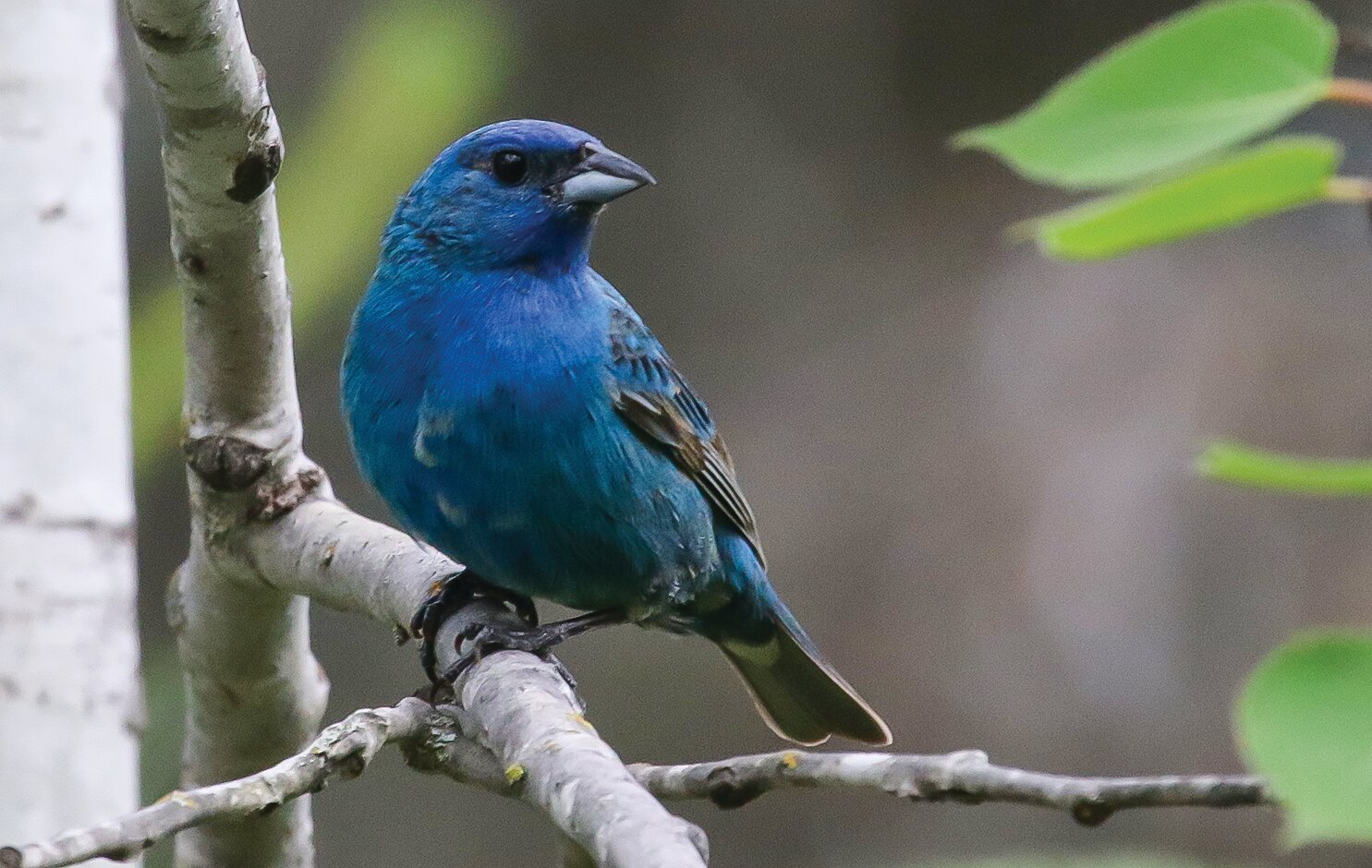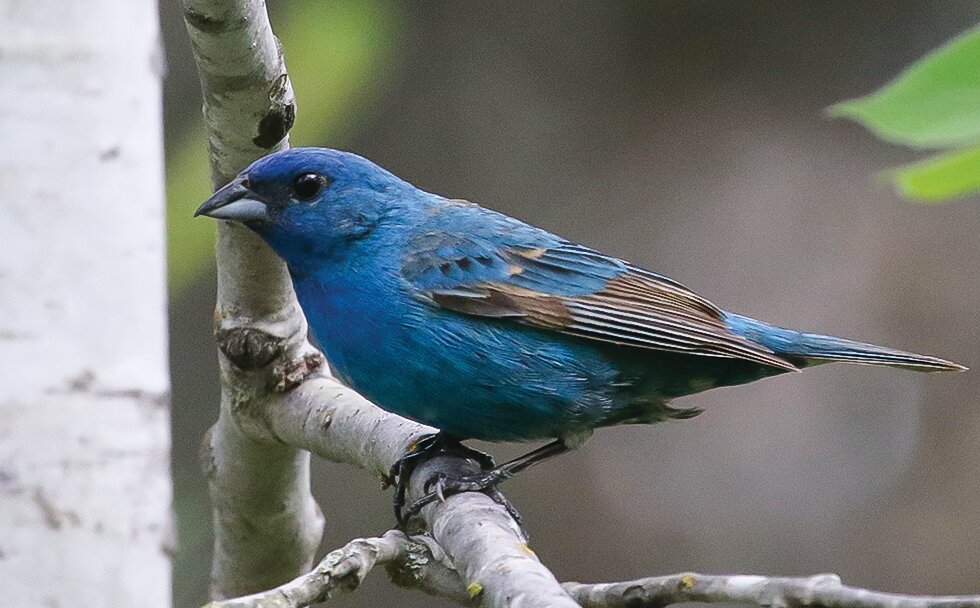Support the Timberjay by making a donation.
The sound of summer
The lazy song of the indigo bunting takes me back to my youth
I was walking the other day near the Junction Road between Tower and Soudan when the languid song of an uncommon bird in our area, brought me back to my younger days. It was the song of an indigo bunting, which speaks to its world through a series of paired notes, sung in no particular hurry. I’ve seen various mnemonics, which typically describe the song as “what-what, where-where, see-it-see-it.” It’s a little raspy and a little musical but typically sung with confidence.
It was drilled into my memory banks during my teenage years on so many summer treks down along Nine Mile Creek, which flows through the center of Bloomington on its way to the Minnesota River. We lived on the edge of the creek valley, which was heavily wooded and mostly undeveloped public park. I had a few rarely traveled trails that dropped from the street by our house into the creek valley, but I often made my way down on the winding driveway that connected a house seemingly ripped from a fairy tale with the outside world. It was an older home, two-story but relatively small inside. It was the home of the Bugensteins, family friends so they never minded when I cut through their property during my nearly daily ventures into the woods. They were holdouts against the city, which had wanted to acquire their property to consolidate their ownership of the park. I absolutely understood the Bugenstein’s tenacity. Their small home and their surrounding acre were perched along the creek, at the site of an old mill that was long gone by the 1970s. It was down in a steep hollow and with heavily wooded hills all around them, the noises of the surrounding suburbia virtually disappeared, save for the occasional Northwest 707 coming in or taking off from MSP’s southwest runway.
The hills around them were alive in the summer with the songs of any number of species of birds, but the indigo buntings were among the most memorable for me. Their lazy song epitomized summer in my young mind and their return to “my” woods year after year was a constant in my life.
When I heard those familiar notes the other day, they instantly had my attention. I had ventured out with my camera in search of butterflies for an upcoming Outdoors page, but one of the best things about nature photography is you never know what you’re going to find on any given day. Most of the time, it isn’t what you expected. An indigo bunting was the furthest thing from my mind that afternoon.
While I’ve run into indigo buntings a number of times over the years here in the North Country, we’re on the northern fringe of their breeding range, which is why I would classify them as uncommon here. The males are easy to identify on sight, since they’re the only entirely blue bird you’re likely to find in Minnesota. The eastern bluebird is roughly the same size, (they’re both the size of a large sparrow), but they have rusty orange breasts and a white belly. The male mountain bluebird is almost entirely blue but it’s a lighter shade and it’s typically found in the Rockies, not in our region.
While the male indigo bunting is a visual standout, the female is one of the most non-descript birds found in Minnesota, a drab brown with no distinctive markings. It’s easy to mistake it for a sparrow, although even sparrows are typically more colorful. In fact, it’s so drab that that in itself is its most reliable field mark.
Indigo buntings typically inhabit brushy areas, particularly on the edges of fields, or other edges. The edge of a weedy, abandoned field is their favored habitat, which is exactly where I found the bird pictured here. It was this weedy field, covered in oxeye daisies, hawkweed, and buttercups, where I had hoped to find the butterflies I’d been planning to photograph. In the end, there was an indigo bunting and swarms of mosquitoes but not a butterfly to be seen. Call it a successful outing, nonetheless.









